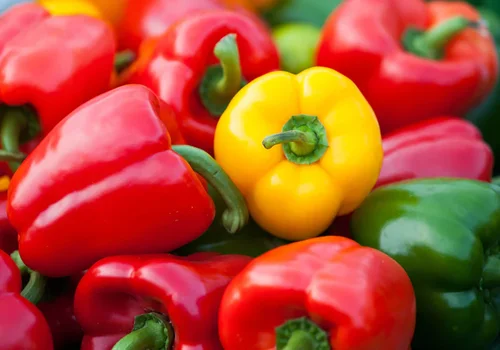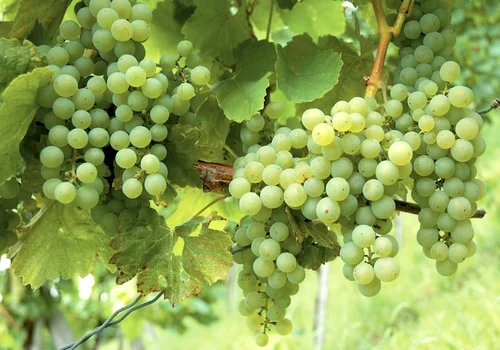Growing bell peppers can be a rewarding experience, whether you’re an avid gardener or a novice looking to cultivate your own produce. This guide will walk you through the essential steps and tips to ensure a successful pepper harvest. From choosing the right seeds and soil to managing watering and fertilization, you’ll find everything you need to get started.
Choosing the Right Seeds
The first step in growing bell peppers is selecting the right seeds. Opt for seeds that germinate quickly, such as those for red or yellow peppers, which tend to sprout faster. Hot pepper seeds also have a quick germination rate. When you cut open a pepper, you’ll notice the seeds are large and robust. On the other hand, sweet bell pepper seeds can be slower to germinate and may sometimes fail to sprout altogether.
Preparing the Soil
Bell peppers thrive in well-drained, light soil. It’s essential to choose a soil that facilitates good drainage and airflow. To improve soil structure, consider mixing in some leaf mulch to enhance aeration and drainage. Avoid using any fertilizers initially, whether organic or chemical, as they can hinder seed germination.
Planting the Seeds
Once you have prepared your soil, it’s time to plant the seeds. Start by moistening the soil thoroughly. Sow the seeds directly from the pepper into the soil, spreading them out rather than clustering them in one spot. Cover the seeds lightly with soil to allow them to germinate. Use a spray bottle to gently moisten the soil, which prevents disturbing the seeds and ensures consistent moisture.
Managing Light and Temperature
Bell peppers require adequate light for optimal growth. Place the pots or planting containers in a location with good indirect light. For seed germination, maintaining a temperature above 18°C (64°F) is crucial. If the ambient temperature is too low, consider using a plastic cover or greenhouse to create a warm environment.
Watering and Fertilization

Bell pepper plants are sensitive to watering. Initially, water the plants thoroughly but avoid overwatering, as this can lead to root rot. Allow the soil to dry out slightly between waterings. Once the seedlings are established, continue with regular watering, ensuring that the soil remains consistently moist but not soggy.
When it comes to fertilization, start with a balanced, low-nitrogen fertilizer once the plants have a few sets of true leaves. Avoid high-nitrogen fertilizers, as these can lead to excessive leaf growth at the expense of fruit production.
Pest and Disease Management
Bell peppers can be susceptible to various pests and diseases. Common issues include fungal infections and aphid infestations. Regularly inspect your plants for signs of disease or pests. If you notice any issues, treat them promptly with appropriate measures such as fungicides or insecticides. Additionally, pruning lower leaves can help improve air circulation and reduce disease risks.
Harvesting and Pruning
Pruning is essential for encouraging healthy growth and maximizing fruit production. Remove lower leaves and any excess foliage that may obstruct light or airflow. Prune regularly to maintain the plant’s shape and promote better fruit development.
Bell peppers typically take around 25 days from planting to begin showing signs of fruit. However, be patient; the full maturation of the peppers can take up to 14 weeks. Harvest the peppers when they are firm and have reached their full color.
Frequently Asked Questions
- How long does it take for bell pepper seeds to germinate?
- Bell pepper seeds usually take between 7 to 14 days to germinate, depending on the temperature and soil conditions.
- What type of soil is best for growing bell peppers?
- A light, well-drained soil is ideal. Adding leaf mulch can improve soil structure and drainage.
- How often should I water my bell pepper plants?
- Water the plants regularly to keep the soil consistently moist but not waterlogged. Allow the soil to dry out slightly between waterings.
- When should I start fertilizing my bell pepper plants?
- Begin fertilizing once the seedlings have developed a few true leaves, using a balanced, low-nitrogen fertilizer.
- What are common pests and diseases affecting bell peppers?
- Common issues include fungal infections and aphid infestations. Regular inspection and timely treatment are essential.
- How can I encourage more fruit production on my bell pepper plants?
- Pruning lower leaves and ensuring proper light and nutrient conditions can help increase fruit production.
- What should I do if my bell peppers are not growing well?
- Check for issues such as poor soil drainage, improper watering, or pest problems. Adjusting these factors can help improve plant health and growth.




